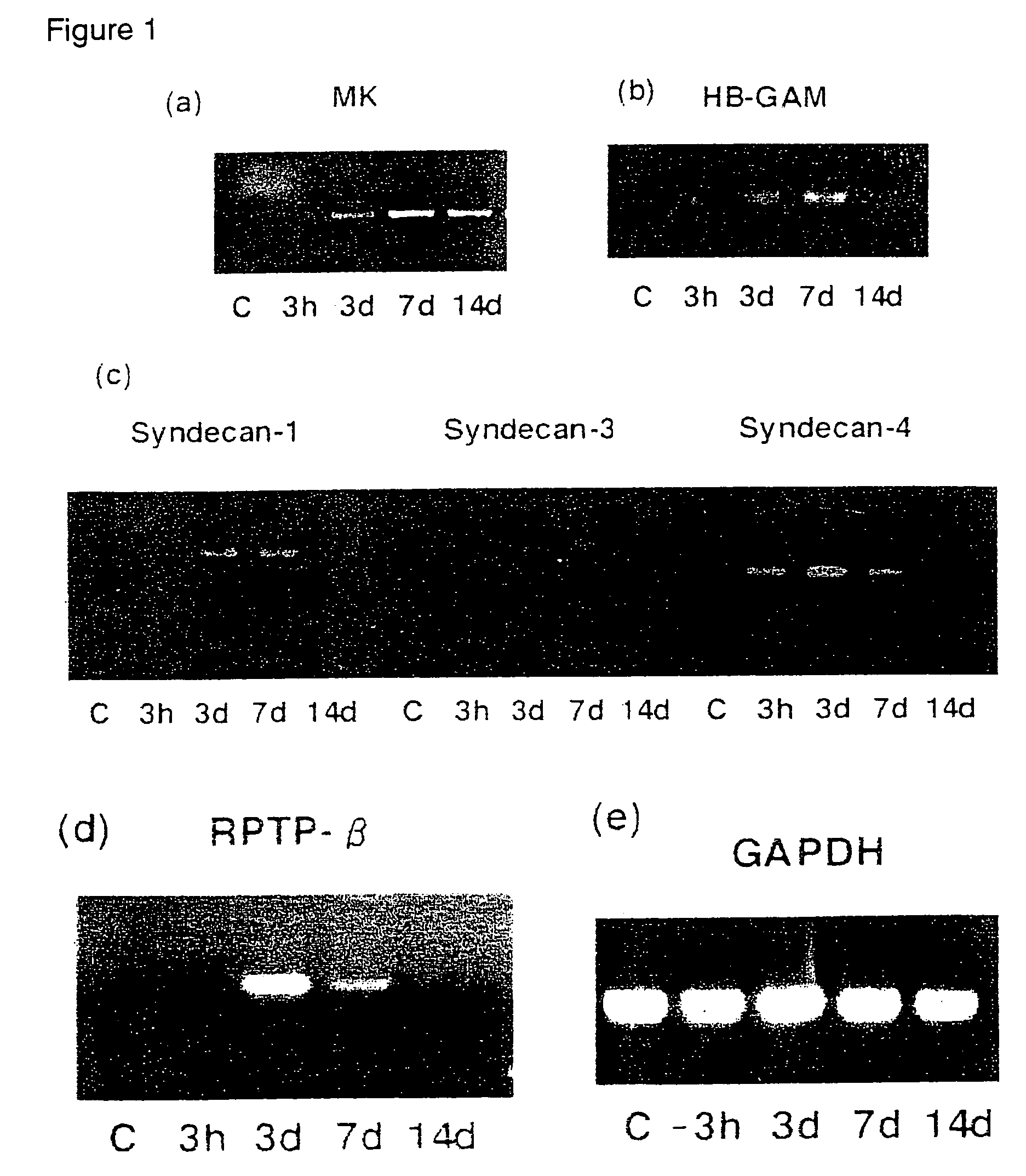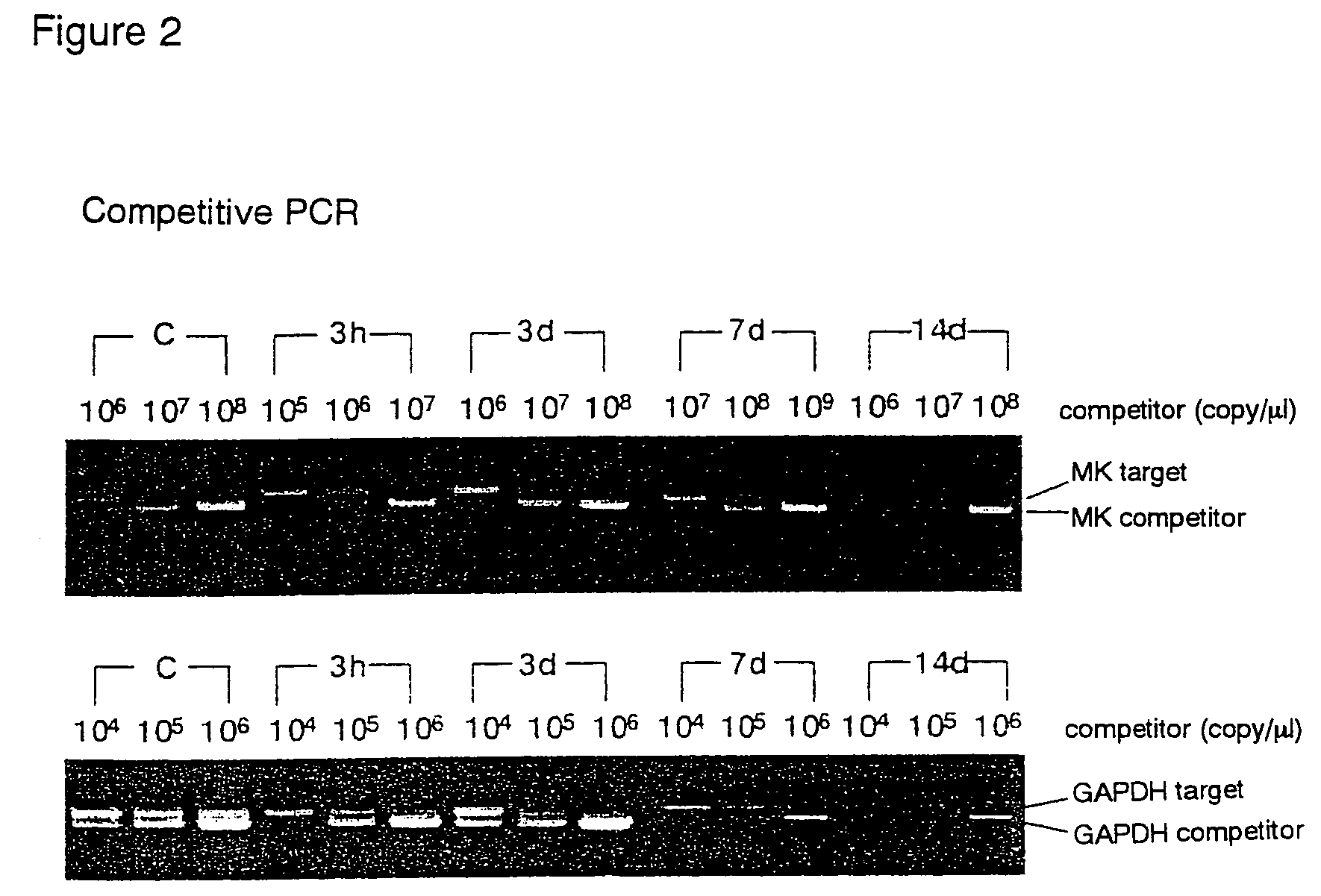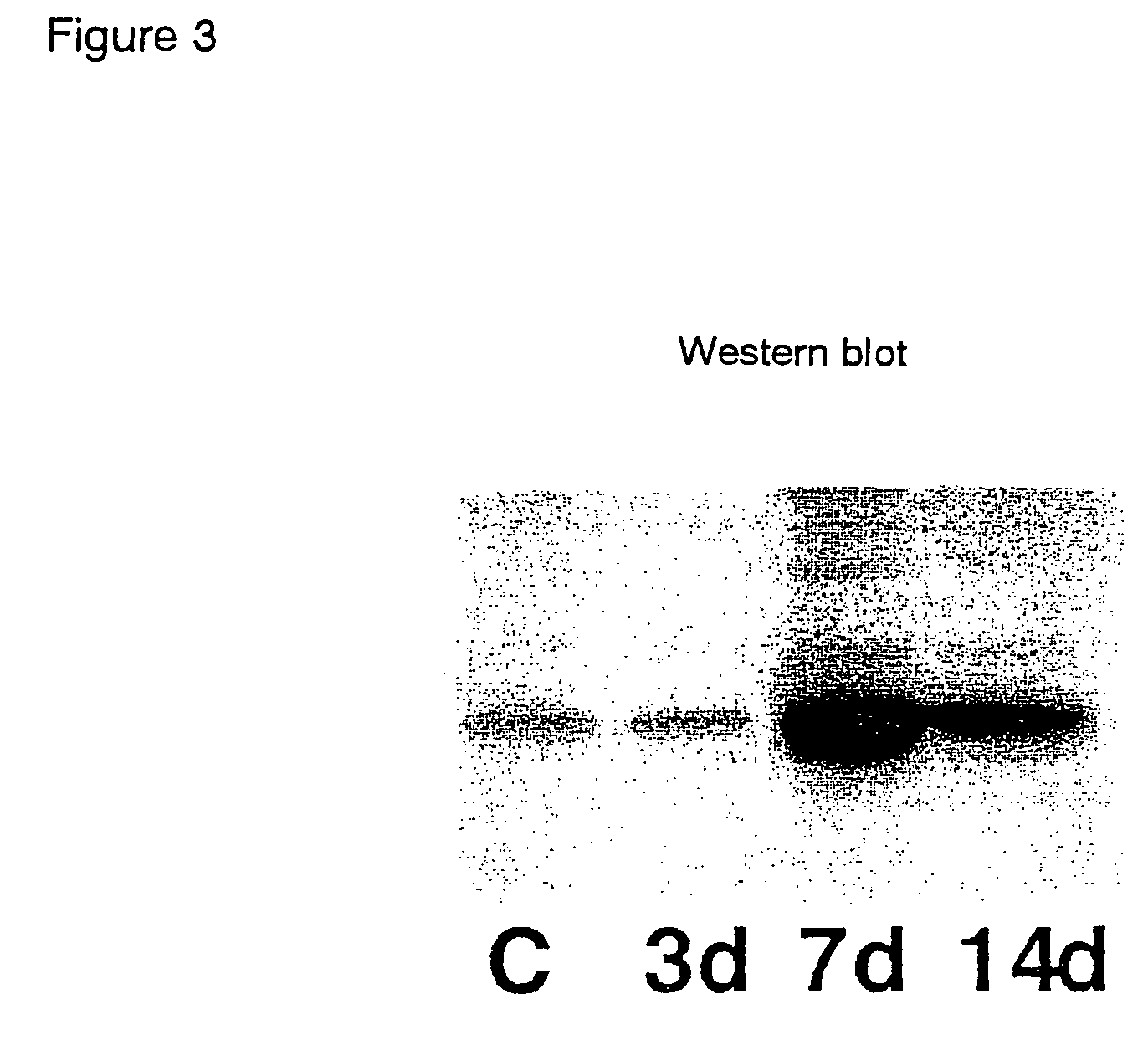Pharmaceutical compositions for the prevention and treatment of atherosclerosis and restenosis after PTCA
a technology of atherosclerosis and compositions, applied in drug compositions, cardiovascular disorders, antibody medical ingredients, etc., can solve the problems of no clinical efficacy for any of these pharmaceuticals, disturbance of circulation, etc., and achieve the effect of increasing blood pressur
- Summary
- Abstract
- Description
- Claims
- Application Information
AI Technical Summary
Benefits of technology
Problems solved by technology
Method used
Image
Examples
example 1
Preparation of Restenosis Model
[0072]Rat carotid artery balloon injury model was prepared as follows. Fifteen to twenty week-old male Wistar rats (body weight: 350 to 400 g) were anesthetized by administering 50 mg / kg of Nembutal. Limbs of the rats were fixed on a fixed plate. The collum was incised along the median line to expose the external carotid artery. The external carotid artery at the region where the external carotid artery and the internal carotid artery branch out from the common carotid artery was rounded with two pieces of thread with an appropriate interval. The distal region was ligated, and proximal region was readied for ligation. The small part of the external carotid artery between the two pieces of thread was incised. A 2 F Fogarty catheter was inserted through this incision into the common carotid artery, and further to its origin. A balloon was inflated with physiological saline at the origin of the common carotid artery until some resistance was created, and ...
example 2
Analysis of Intimal Thickening and MK Expression
[0073]Using the restenosis model, the relationship between intimal thickening and MK expression was analyzed by 1) PCR, 2) western blot technique, and 3) histomorphological observation.
(1) Detection of MK Expression by PCR
[0074]Three normal rats (control group), and three each for every restenosis model group (3 hours, 3 days, 7 days, and 14 days after the catheter injury) were prepared.
(a) Detection of mRNA for each Protein in Blood Vessel Tissues by RT-PCRSPO
[0075]The expression amounts of mRNA for MK, PTN, Syndecan-1, Syndecan-3, Syndecan-4, RPTP-β, and GAPDH (the internal standard) in blood vessel tissues from the control and restenosis groups (3 hours, 3 days, 7 days, and 14 days after the injury) were detected by RT-PCR. From each tissue, mRNA was prepared, and RT-PCR was conducted for the mRNA, the starting material. Primers were prepared by selecting the best parts of known regions (Kurabo Ltd.). The nucleotide sequences of the...
example 3
The Effects of MK on Neointima Formation in MK Knockout Mice
[0084]In order to examine the relationship between restenosis and MK expression under conditions closer to in vivo, the effect of MK on neointima formation was tested using MK gene knockout mice. MK was prepared by the method described in Examples of JP-A No. Hei 9-95454.
[0085]The homogeneous knockout mice (129 / Sv line, 10 to 12 week-old male mice, body weight: 25 to 30 g) were prepared by destroying partial regions of exons 2 and 3 in the MK gene (Gene Cells, December 1998, 3(12), 811-822).
[0086]The murine MK cDNA sequence of GenBank Accession No. JO5447 is as follows:[0087]caggccggag cgggagggag cgaagcatcg agcagtgagc gagatgcagc accgaggctt[0088]cttccttctc gcccttcttg ccctcttggt ggtcacgtcc gcggtggcca aaaaaaaaga[0089]gaaggtgaag aagggcagcg agtgttcgga gtggacctgg gggccctgca cccccagcag[0090]caaggactgc ggcatgggct tccgcgaggg tacctgtggg gcccagaccc agcgcgtcca[0091]ttgcaaggtg ccctgcaact ggaagaagga atttggagcc gactgcaaat acaagtttga[0092]...
PUM
 Login to View More
Login to View More Abstract
Description
Claims
Application Information
 Login to View More
Login to View More - R&D
- Intellectual Property
- Life Sciences
- Materials
- Tech Scout
- Unparalleled Data Quality
- Higher Quality Content
- 60% Fewer Hallucinations
Browse by: Latest US Patents, China's latest patents, Technical Efficacy Thesaurus, Application Domain, Technology Topic, Popular Technical Reports.
© 2025 PatSnap. All rights reserved.Legal|Privacy policy|Modern Slavery Act Transparency Statement|Sitemap|About US| Contact US: help@patsnap.com



